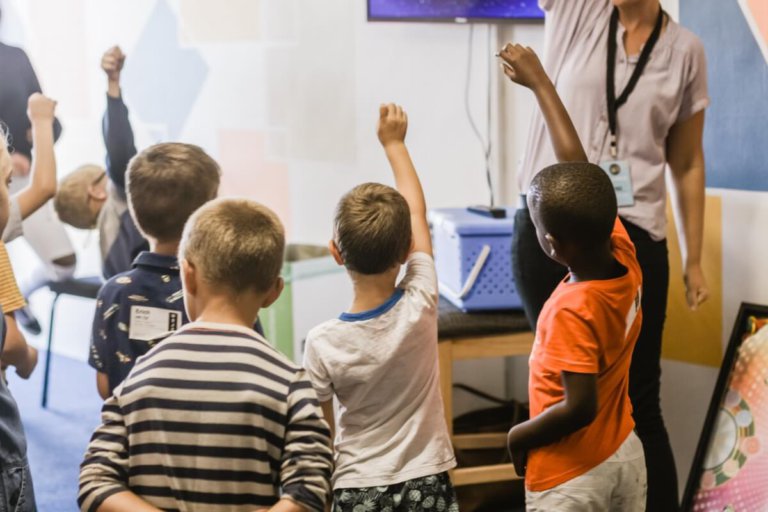
Have you ever seen this video?
In a creative attempt to get his students’ attention, this teacher’s humorous classroom stint went viral in days.
When a teacher takes the initiative to be innovative, it can dramatically change the dynamic of a classroom.
It could increase a student’s level of comfort. By having a teacher who knows how to connect with their students on a personal and professional level, learning jumps from serious to fun.
In the global education sector, there’s always a new and creative way to command a student’s attention. From expensive interactive systems to pricey flex-furniture, schools are continually using their budget to improve their learning environments.
But what if classroom innovation starts with the teacher?
Rather than investing money into flashy new furnishings, why not spend it on informative teacher workshops and innovative transactions of learning techniques and styles?
By instilling innovation through teachers, the demand may be less for learning equipment investments.
Specialist #STEM Teacher and Senior Leader Anthea Ponte is passionate about science.
Her methods foster curiosity and analytical and innovative thinking in her students, helping them develop expert knowledge and skills to become the next generation of scientists and researchers. pic.twitter.com/Bc8q33DfQW
— Chief Scientist for South Australia (@sachiefsci) July 7, 2019
A language arts and social studies teacher in Southern Ohio, named Daniel Bailey, recently suggested that teachers should run through some exercises of their own before starting the curriculum mapping process each year.
Claiming that teachers, rather than the tools, are key to innovation, Bailey bestows great advice for fellow teachers to follow.
“Before you put pen to paper-or finger to keyboard – there are several things to consider. Without a solid idea of your own expectations, you’ll never be able to develop the most engaging and developmentally appropriate curriculum for your students.
“It’s imperative that you have an understanding of your students’ capabilities before you plan a curriculum for them to engage with,” Bailey explains.
By paying attention to the individual needs of students and creating a curriculum that livens up their attention span could be better than purchasing a new selection of learner enhancement tools.
Beginning at the root of the curriculum would inflict greater impact and long-lasting effects.
Bailey also outlines that differentiation of materials for a variety of learners is most likely going to be a teacher’s biggest challenge in their first couple years of teaching.
“Since differentiation relies on the premise that there will be a diverse group of learning needs within your classroom, it’s essential to both identify and plan for these needs as specifically as possible,” he clarifies.
Innovation Force!
Camp Invention off to a good start at with @TompkinsSTEM #wearechesternj #campinvention pic.twitter.com/p5RXCY1vQv— Lauren Scarfo (@ls_teacher) July 8, 2019
What works for one student may not work for another, so classroom innovation must also consider individualisation.
But by creating a safe, secure and comfortable learning environment where students are free to express their ideas and aspirations, it won’t take long for classroom innovation to rear its creative head!
Liked this? Then you’ll love…
4 explorative international schools that value student innovation
Balance arts, academics, and athletics for students to reach their full potential







